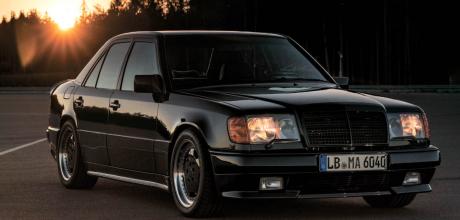1987 Mercedes-Benz AMG 300E 6.0 Hammer W124
If I had a Hammer… Icon of performance – AMG 300E 6.0 Hammer Many will recognise the AMG Hammer as a performance icon of the 1980s, but few know exactly how these high-speed V8s came into being. Hartmut Feyhl was there from the beginning of development and built all cars for the US market. He reveals all about these road weapons… Words Ian Kuah.Images Craig Pusey & Ian Kuah.
If I had a Hammer… A first-hand account of how AMG developed its 1980s supercar killer, the six-litre Hammer
HAMMER! REVEALED: DEVELOPMENT SECRETS OF AMG’S ICONIC SUPERCAR-BEATER
Icon of performance – AMG 300E 6.0 Hammer
AMG’s ‘Hammer’ is a legend in the world of high performance saloons. Not only was it the first production saloon capable of 300km/h (or 303km/h, 188mph to be exact), it was also the conceptual trailblazer that led to Mercedes creating the 500E with Porsche. The Hammer was the brainchild of Hans Werner Aufrecht, who founded AMG in 1967, and remained its frontman and driving force until January 1 2005 when DaimlerChrysler acquired the balance of his shares.
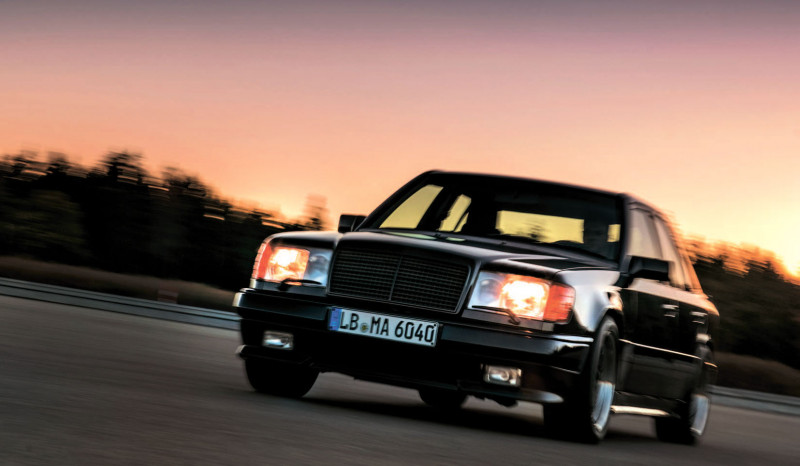
The ideal person to tell the inside story of the Hammer is Hartmut Feyhl, founder and owner of RennTech. A native of Affalterbach, former AMG master technician and Aufrecht’s blue-eyed boy at the time, Hartmut built the prototype Hammer and was later appointed Technical Director of AMG North America where he built all the US market Hammers.
“The first US-built car was red and was the third or fourth Hammer in existence at the time”
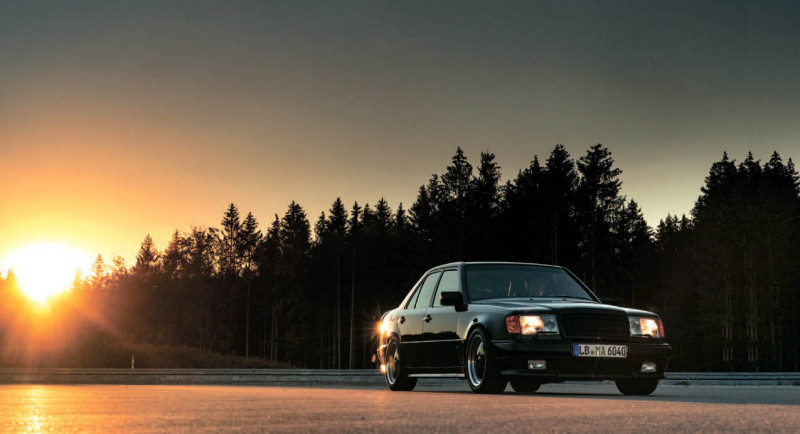
When Mercedes began negotiations to buy a stake in AMG, one of its requests was that AMG would cease official operations in the US. Hartmut had the choice of returning to Germany or staying on. He chose to stay and soon founded RennTech to look after existing AMG clients. Today, RennTech is the most prominent home-grown Mercedes tuner in North America.
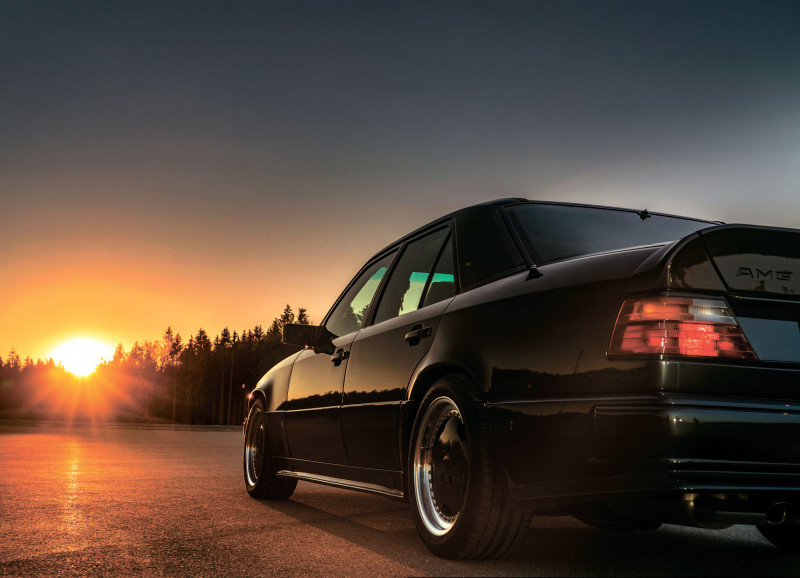
“In 1984, Aufrecht came up with the idea of building a four-door saloon capable of 300km/h, so he picked the biggest motor in AMG’s arsenal to stuff into the newest and most aerodynamic Mercedes model – the newly launched W124 sedan,” Hartmut recalled. “At the time, we had the AMG 5.2- and 5.4-litre versions of the M117 5.0-litre V8, but after the factory launched the 5.6-litre version in 1986 we were able to go to 6.0 litres with our own DOHC heads.”
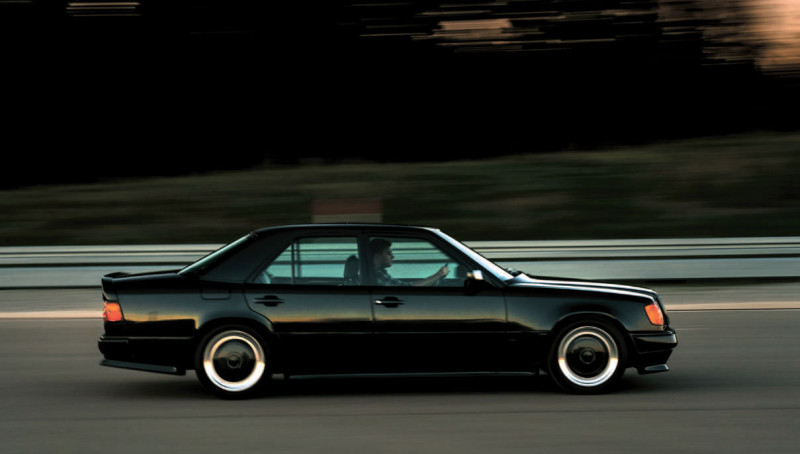
In those days, AMG was a tuner and race car preparation company without very deep pockets, and Aufrecht counted every penny when it came to R&D and prototype work. “This is why the donor car for the Hammer prototype was the cheapest W124 we could buy – a 200D in blue-black metallic [code 199] with cloth trim,” Hartmut explained.
“However, this turned out to be a false economy in terms of man hours and sheer aggravation because the entire diesel fuel system including the tank and components like the fuel pumps and lines had to be removed before we could even begin the modification work,” he said.
“The donor car for the Hammer prototype was the cheapest W124 we could buy – a 200D in blue-black metallic”
The Hammer required a lot of sheet metal alterations to make the V8 fit an engine bay designed for a straight-six. “The frame rails towards the rear of the engine bay had to be modified to take the larger V8,” Hartmut explained. “We welded in stiffeners and made up a new firewall that was also removable. Clearance was particularly tight at the rear left side where the exhaust manifold had to miss the steering box.

“Weight distribution was not too badly affected, as the six had an iron block and the V8 was all-alloy,” he continued. “The rear subframe, propshaft and driveshafts were upgraded to take the much more potent engine, and we also added a US-made Gleason-Torsen differential.
“The stock gearbox was borderline with this kind of power, and it was only later when I founded RennTech and some of the Hammer owners started coming to me for rebuilds that I did some modifications to strengthen it,” he said. “The gearbox is fine when you run fast on the autobahn, but some of the US owners were running hard from stoplight to stoplight and heat soak became a problem. So I added more clutches to a modified drum and installed an oil cooler, which did the trick.”
“After the factory launched the 5.6-litre V8 in 1986, we were able to go to 6.0 litres with our own DOHC heads”
The German-built Hammers were based on four- (W124.020) and six-cylinder (W124.030) donor cars, but because the W124 was only sold in the US in six-cylinder form all the cars converted by AMG North America used 300E donor cars.
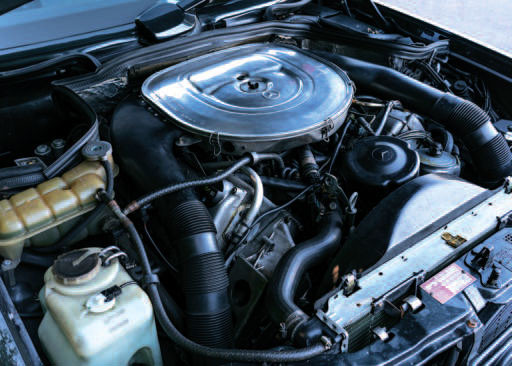
AMG North America was based in Westmont, IL near Chicago and run by Richard Buxbaum, a successful grey market dealer who imported high-end German marques like Alpina, AMG and Ruf to satisfy wealthy car enthusiasts looking for something truly exotic. AMG NA had been established in 1983, but after two years things were flat and Richard had not managed to sell many cars or parts. Then the US Government closed the grey market loophole that allowed non-US models to be imported, and everything changed overnight.
In discussions with Aufrecht on how to get around this and improve sales, Richard explained that he needed someone from Germany to come over and build Hammers in the US using US-market donor cars. The upshot was that Hartmut needed to go to Chicago. “The whole process consumed a year, and in the summer of 1986 I flew over to the US planning to stay the three weeks it would take to update the first Hammer that had been sent over from Germany some months before,” Hartmut recalled.
This Hammer had started life as Aufrecht’s company car with an experimental 5.0-litre DOHC motor. Richard subsequently bought it and exported it to the US. By 1986, AMG had finalised the 6.0-litre for production along with detail improvements to the suspension and other components. With a 100x95.8mm bore and stroke, the US version of the 6.0-litre (5,953cc) version had a 9.2:1 compression ratio and was good for 370bhp at 5,500rpm and 406lb ft at 4,000rpm. The European version had a 9.8:1 compression ratio and made 380bhp and 417lb ft. Every AMG engine built at the time was put onto an engine dynamometer and run-in and tested in the car before being signed off. That is why there were minimal engine problems when these cars were new.
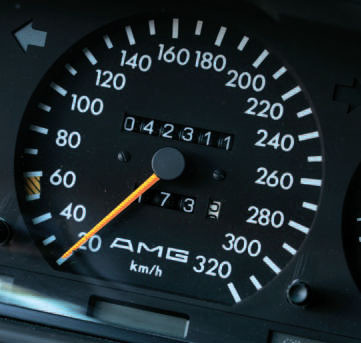
Richard had promised Car & Driver magazine that they could borrow the 6.0-litre Hammer in the US for a test, so the first two of the three weeks of Hartmut’s stay in Chicago led up to a serious deadline. The 6.0-litre V8 that he had built in Affalterbach was dispatched to America in a crate and was waiting for Hartmut when he arrived. Still suffering from jet lag, he set about removing the engine and gearbox from the blue-black W124. Over the next two weeks he installed the updated firewall and slotted in the new 6.0-litre V8, along with the upgraded electronics and suspension.
Hartmut had disassembled the whole car by himself, and at this point Richard and his crew were looking very nervous. “Hey, are you sure it will be ready in time?” an anxious Richard asked as the deadline approached. Come the event and the car was ready to go, which suitably impressed the team.
Up to this point, Aufrecht had been really pushing for Hartmut to be the man to build Hammers in the US, while Richard was not so sure. However, after that show of efficiency and skill under pressure, Richard had only one thing to say to Aufrecht: “We want this guy!”
“A journalist from Car & Driver flew into Chicago and we drove the Hammer back to their base in Ann Arbour, Michigan for the test,” Hartmut explained. “After they were done, I drove it back to Chicago.”
In October 1986, Hartmut returned to the US, this time to stay. AMG North America had three partners – Richard Buxbaum was the founder and CEO, Aufrecht represented AMG, and the third partner was an investor group from Chicago, who financed the operation and inventory. Next, they acquired a silver Hammer 6.0 that had also been run by Aufrecht in Germany. This was sold to Bill Acquavella, the New York art dealer and owner of Acquavella Galleries, who kept it for a few years. “Years later, I built him a new car with our 6.0-litre M119 V8 conversion, and then he sold the original Hammer,” Hartmut said. “A friend of Bill’s son had been given a ride when he was young and was blown away. Recently he found this car in not very good shape and we restored it for him.”
The first US-built car was red, which was the third or fourth Hammer in existence at the time and ended up being tested by just about every significant US car magazine and newspaper, and a few high-profile lifestyle publications like Playboy. Significantly, this car also graced the cover of Andy Cohen’s famous Beverly Hills Motoring Accessories (BHMA) mail order catalogue. This was a really big deal as BHMA was internationally famous and its catalogue had a print run of around 1m copies. BHMA was AMG NA’s West Coast distributor and ended up selling about half of all the US-built Hammers.
“Before the car was even finished, it was shipped to LA for the grand opening of BHMA’s new premises, and I flew over to LA to finish it in their shop,” Hartmut remembered. “When it was finally finished, the test drive took place around midnight or later. I drove down to Pacific Coast Highway, or Highway 1 with one of the guys from the shop and let it rip all the way back to LA. Once I was satisfied that everything was fine, we arrived back in LA at about 6am.
“Formula 1, Le Mans and Sebring ace, Phil Hill drove the car for Road & Track magazine and was really wowed by its performance,” said Hartmut. “After that, I did not see it again for a year as it did the rounds with the press. When it came back, it would not drive straight and was actually dangerous. I replaced all the suspension components and aligned it, but it was never right. I suspected that one of the journalists must have somehow twisted the shell.”
In 1988, Aufrecht flew over for a really great customer event at the Skip Barber Racing School at Road America in Wisconsin. After that, the red car was sold and popped up in NY or NJ many years later in some small auto shop. “The owner did not want to sell it at the time, but eventually did after playing with it for two or three years,” Hartmut explained. “I heard it is still out there, but I’m not keen to acquire it as I know it has big problems.
“I built somewhere between seven and 10 M119-powered cars in the early 1990s using the E420 and E500 as the base car. These are not Hammers, but rather RennTech’s equivalent of the E60 AMG. I restored the silver car and returned it to the new owner in early 2021,” Hartmut said. “I did not recognise it at first because a few silver Hammers were built, then I saw all the car magazines in the trunk and the penny dropped.” The owner later sent me a video made by his car audio installer in New York who built new mobile tech into the original car phone.
“While the W124 was very slippery with the base 200D registering just 0.29Cd in the wind tunnel, we had to do further work to improve the aerodynamics so that the car could reach our 300km/h target,” Hartmut explained. “The prototype Hammer went like a rocket up to around 280km/h [174mph] plus, but it was really hard to get it beyond 290km/h [180mph]. We tried lowering the car, fitting narrower tyres, and experimented with final drive ratios, all without success.
We then blueprinted an engine and installed special cams, which boosted output by 20bhp, but even that was not enough to break the magic 300km/h [186mph] barrier. We also hand-selected the transmission,” said Hartmut. “Erhard Melcher developed a little more aggressive set of cams with eight degrees more duration. Worth another 5hp, this took the output up to around 390hp [385bhp]. This was the only car built with those cams although a couple of power-hungry US customers asked me to install them in their cars. “We created a flat bottom under the car using thin aluminium panels, but we still ran into a brick wall at 298km/h [185mph],” he recalled. The crux of the matter was that drag increases with the square of speed, and a disproportionate amount of power is needed to achieve small increments in speed. This was clearly an aerodynamics issue...
“We knew that the Porsche 928S would comfortably reach 255km/h [158mph] with 310hp, which was much less power than the Hammer, so we examined its aerodynamics in detail,” said Hartmut. “We saw that the Porsche had shutters for the radiator that closed at speed, and the reduction in drag from this mod alone was worth 4 to 5km/h in top speed. We rigged a similar system for the Hammer, and this enabled it to comfortably slip past the 300km/h benchmark. The fact that this was the only car we built with those underpanels and shutter system makes it very distinctive, but as it was just a jury-rigged prototype built for the top speed record, the shutter system was removed before the car went to the US,” Hartmut explained.
“When I looked under the silver car after it arrived here last year, I saw that it had aluminium underpanels, although some were missing. The final clincher that confirmed its identity was the black soot below the exhaust headers on the heat insulation that we stuck onto the steering box of every Hammer. This was revealed as soon as we pulled out the motor.
The story behind this modification is actually quite funny in hindsight, although it created panic at the time,” Hartmut mused. “Both Aufrecht and Kurt Pflugfelder – AMG’s workshop manager – always drove like maniacs all the way up the hill to the factory.” The latter had earned the nickname ‘Pflugi’, which is phonetically similar to the word ‘flug’, the German word for ‘fly’. The staff could hear the V8 in full cry coming up the hill, and would say, ‘Pflugi is coming!’. “I remembered the incident when Aufrecht was coming in hot, full throttle up the hill, then hard on the brakes left and left into the car park to his office on the corner of where the customer centre is today,” Hartmut continued. “I was at the counter in the office speaking to the secretary, when Aufrecht strode past into his office. A minute later someone suddenly shouted that the silver Hammer was smoking! I looked over my shoulder and at first I thought the smoke was coming off the brakes, which was not unusual. Then I realised that the smoke was coming from under the bonnet and screamed that the car was on fire. Aufrecht ran out and opened the bonnet while I grabbed a fire extinguisher. It was just beginning to burn so we caught it just in time, but the extinguisher powder made a mess.”
The heat shield protecting the steering box from the exhaust headers on that side of the motor was made from fibre-glass with aluminium foil on top. This had become soaked with oil, and the extreme heat soak after Aufrecht’s spirited drive caused the oil to ignite. “We cleaned up the engine bay, but as we did not take the engine out the black soot left over from the fire remained on the areas we could not reach,” said Hartmut. “Last year was the first time the motor was removed since the car was built, and the remaining evidence of that fire jogged my memories of the early days of this car in Germany.”
RennTech currently has a dark grey Hammer in for restoration. This example has the integrated duck tail bootlid spoiler handfabricated from sheet metal in the US. A Richard Buxbaum idea, this was aerodynamically identical to the AMG rear spoiler, which was made from GRP and bonded to the bootlid, but Aufrecht did not like it only because it meant he could not sell his spoiler in that market.
So, what is a real AMG Hammer? If you are a purist, arguably only the four-door with the 6.0-litre, M117 AMG DOHC V8 motor counts as a true Hammer. According to AMG in Germany, the total number of Hammers produced, including Saloons, Coupes and the single TE stands at 54. While a few Hammers ended up in Japan, most have returned to the US or Europe. It is important to note that every single one of the 10 US-built cars was hand-crafted by Hartmut in Chicago.
Only one Hammer TE wagon was ever made, and this blue estate was built for the late Paul Fingold. In a twist of fate, Andy Cohen sold BHMA to Paul Fingold’s Canadian investment group in 1998. This car was then acquired by Aaron Hochman from Connecticut in the early 2000s, along with a dark grey coupe and a black Hammer saloon built for Stuart Hayim. With a price tag of US$175,000 at the time, the Hammer saloon was seriously expensive, so it is no surprise that they were sold to high-net-worth individuals such as a director of Mellon Bank, who bought a grey car from Kicherer in Germany before the grey market was closed down.
Owning a Hammer is one thing. Having it run perfectly is quite another, as AMG’s DOHC motor requires specialist knowledge to work on and set up correctly. “Back in the day, it was part of my job to teach people to work on these cars,” explained Hartmut. “The main thing is the camshaft timing, which takes both practice and talent to get right.”
With that in mind, RennTech offers full support to Hammer owners all over the world, and there is no-one better qualified to work on these cars than Hartmut Feyhl, the man who built most of them in the first place.
“Every single one of the 10 US-built cars was hand-crafted by Hartmut in Chicago”
Hartmut hard at work fettling a 6.0-litre M117 V8 AMG engine.300E 6.0 Hammer owned by M-B Classic in Germany.
320km/h speedo; 26,200 miles covered.
AMG 6.0 V8 delivers a tall wall of veritable thrust.
RennTechrestored 6.0 used by AMG’s Aufrecht. One of AMG’s rare US-market Hammers from RT.Classic Recaro seats with adjustment and heating; AMG wheel. Feyhl was once AMG tech director for North America.
Just the facts Mercedes-Benz AMG 300E 6.0 Hammer W124
- ENGINE M117 5,953cc V8
- MAX POWER 380bhp@5,500rpm
- MAX TORQUE 417lb ft@4,000rpm
- TRANSMISSION 4-speed auto, RWD
- WEIGHT 1,725kg
- 0-62MPH 5.2sec
- TOP SPEED 188mph
- YEARS PRODUCED 1988 to 1996
All figures from Mercedes-Benz; weight is approximate


